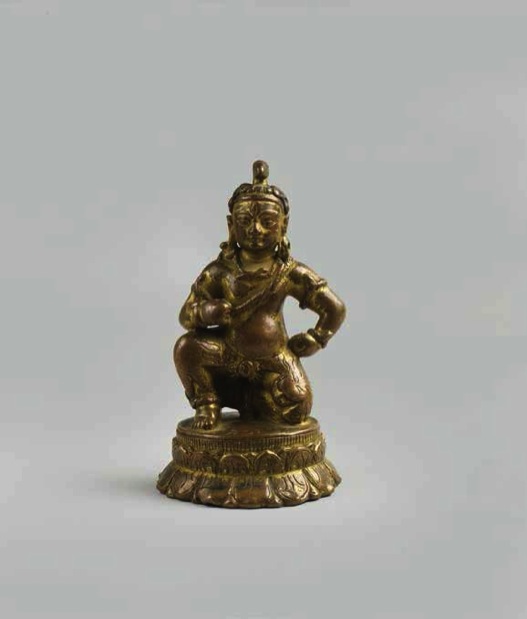
Circa 8th century, Nepal, Hayagriva, gilt copper, 40,5 cm, at the gTsug Lakhang in Lhasa, inventory nº 285, photo and details on Ulrich von Schroeder
A rare and early metal image of Hayagriva (identified by the horse’s head on his flaming chignon) depicted as an attendant: he leans on a danda staff and raises a hand (vandana mudra) towards the main deity he accompanies, usually Tara or Avalokiteshvara. A billowing scarf forms a nimbus behind his head and he is adorned with snakes, including one to hold his short dhoti in place and another worn as a sacred thread.

18th century, Nepal, Hayagriva, bronze with cold gold and pigments, private collection, photo on De Baecque .
Hayagriva, identified by the three neighing horses’s heads in his flaming hair, in his ‘Secret Accomplishment’ form. He has three heads, each with three eyes, six arms, six or eight legs, and wears a tiger skin around his waist, a human hide and an elephant skin on his back, a garland of severed heads, five-skull crowns, bone jewellery, a sacred cord made of human hair. One of his hands makes a wrathful gesture, the others hold a spear, a lasso of intestine, a vajra sceptre, a ritual staff, a sword, all missing in this case.






